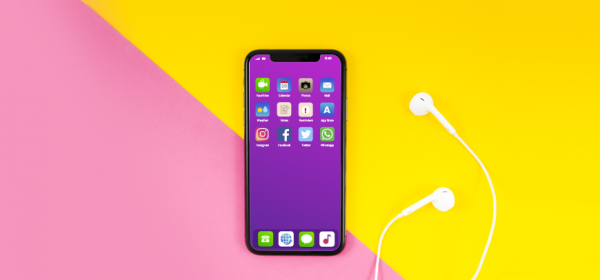It’s been a decade now since smartphones have become an inseparable part of our lives. And the most important role in this marriage has been played by mobile apps. And what they allow a regular person to do; the power it put in the hands of the users.
Currently, there are over 4.5 billion people online and out of the 3.5 billion people use smartphones having apps every day. Around 7.5 billion people are estimated to be active on the internet by 2030 out of 8.5 billion of the estimated people alive at that time. That’s 90% of the total world population. Just imagine the market size of mobile apps these stats alone prove there will be in the near future.
A few years back, we were all anticipating 2020 to happen and within the blink of an eye, 2030 will be here. Hopefully, COVID-free.
What we are getting to here is that the future of mobile apps is happening right now. And the future is drastically competitive considering the opportunities that are available out there.
Every business wants, needs, and definitely should have a mobile app depending on the frequency they want their customers to interact with them. Having apps for B2C businesses might be considered imperative whilst apps for B2B targeting businesses might seem a little far-fetched for now.
Personalized interactions are becoming increasingly popular among customers as well as businesses and apps bring a lot of leverage for businesses in this area. Meanwhile, in the ecommerce landscape, the shift is happening and moving towards m-commerce i.e. having a mobile estore from where your customers can shop on the go. No matter how niche businesses are.
The idea to have a mobile app for your business is not new. It’s as old as the invention of mobile apps. But the main question that looms over the heads of business owners is which way to go? What technology to use for their apps since most of them do not come from a technical background?
If you are among the ones seeking answers to these questions mentioned above, then this blog will simplify some of the aspects of mobile app development for you.
There are essentially three methods to develop a mobile application:
→ Native mobile application
→ Web application
→ Hybrid application development
Native mobile application as the name suggests is native to the devices they are made for i.e. iOS or Android. Native apps are built using either Swift or Objective-C for iOS and either Java or Kotlin for Android devices. Since the apps built are native using native languages, tools, UI components, and directories, they tend to be more robust, perform better, and deliver a better user experience.
The major disadvantage of having a native app is that it won’t be useful for the other platforms including and not limited to web, iOS. Moreover, you can’t reuse the code used to build your iOS app for anything. Additionally, there are limitations from Apple App Store as well that can delay your release if there’s a direct change in the native code. The review process takes roughly around 1-7 days — which can stretch based on the time of the year you are submitting your app or update.
Regarding the resources required to develop native apps — it is harder to find resources that know languages for both apps with equal proficiency. So, here the cost goes high for the development itself, and when you have to update the app, you need to again go through the same process as well as shell out a better chunk of money.
Web application is an application program developed using languages like HTML, CSS, and JavaScript and delivered over the internet through browsers. Some of the websites can be categorized as web apps. The main advantage of building a web app is that you don’t have to go through the tedious approval process that app-stores have and you can directly deliver the application to your users for mobile as well as browser. Since it is built using HTML, CSS, or Java, the developers have huge libraries like Vue, Angular, React, etc. to use giving them more freedom with the functionalities.
Here, the advantage and disadvantages stem from the source — since it is developed using not native languages, they deliver a less smooth experience and have limitations in accessing the abilities of the platforms. Additionally, they are also restricted to the capabilities of the users’ browsers.
Finding resources to create web applications for your business is easier as the languages used to create them are more universal. The cost to create them usually runs lower than native apps and they can be accessed on multiple platforms and can be updated in the one go for all the platforms.
Hybrid application is essentially native mobile application development + web application development. The core application is written as a web application which is then wrapped around a native shell using applications like Ionic’s capacitor or Apache Cordova. What these applications essentially do is create a shell for your web application which has the webView component where your app loads for the users without giving them the hint of the same. The limitations of web applications can be overcome using the plugins available for Cordova or Capacitor that enables you to use the capabilities of their native OS. Additionally, you can also publish your hybrid applications on both the app stores since the apps are loaded in a native way.
Since it is fundamentally a web application, you might run into a limitation regarding UI elements as you might need to recreate them but this limitation can be easily overcome by using libraries like React Native, Ionic, Xamarin, etc.
To improve UI in hybrid app development, hire a React Native specialist for responsive mobile interfaces.
To summarize the advantages of the hybrid application:
→ Low costs and easy to develop
→ Speed performance
→Great UI/UX
→ Offline support
→ Easy integration with other apps
→ Multi-platform support
In short, these apps provide the best of both worlds. Some of the most popular apps like Gmail, Twitter, Instagram, Evernote, and more are created using the hybrid way. You didn’t know that, did you?
The performance is great, the experience is great.
But wait…
There’s another quick way to go by creating a mobile app for your estore!
App Builders!
You get native mobile applications for iOS as well as Android under $400 since they have the basic components ready for an estore, you just need to white label the solution and publish it on app stores.
How?
Using our Magento 2 mobile app builder.
Intriguing, right?
Find out more here →





